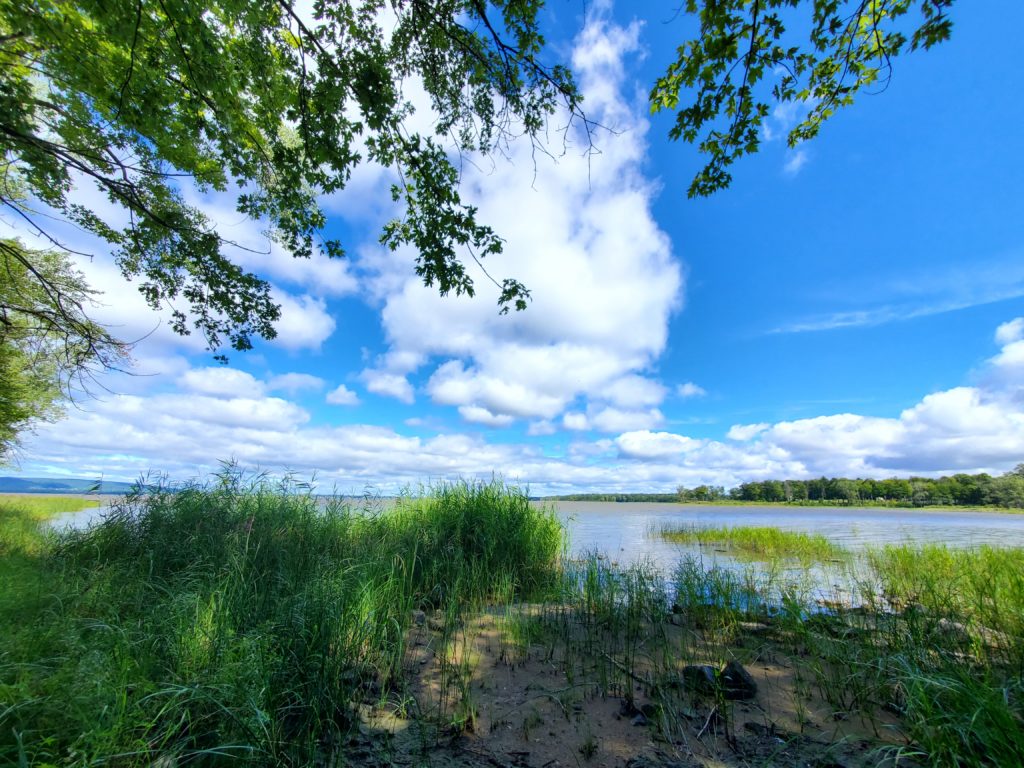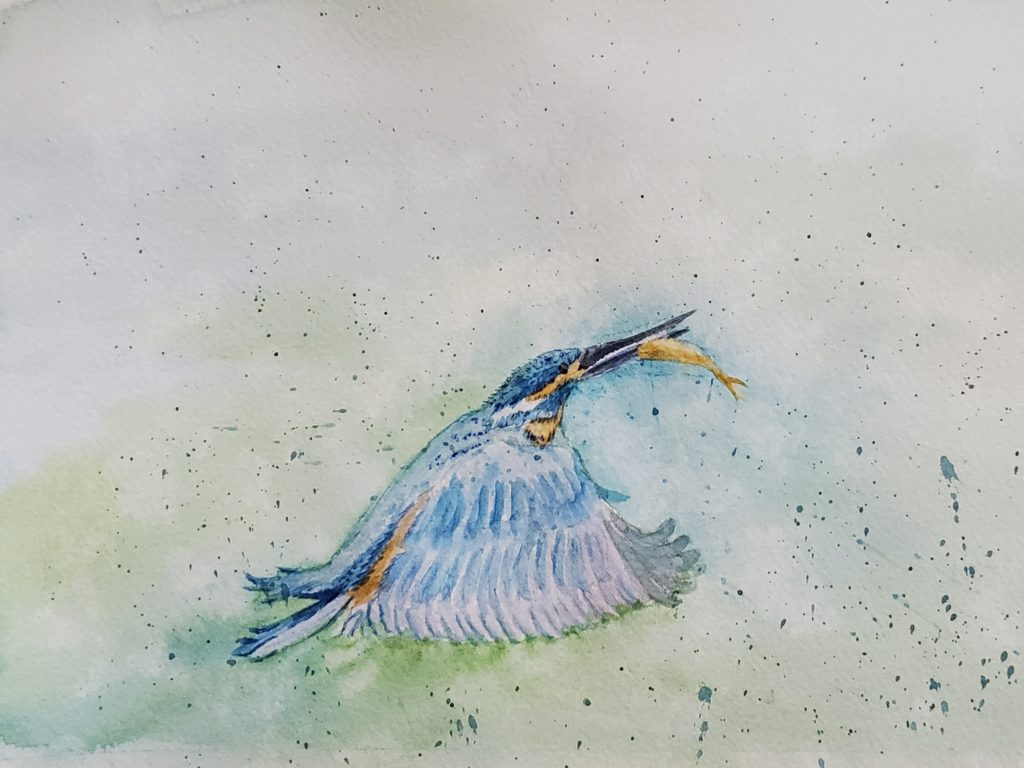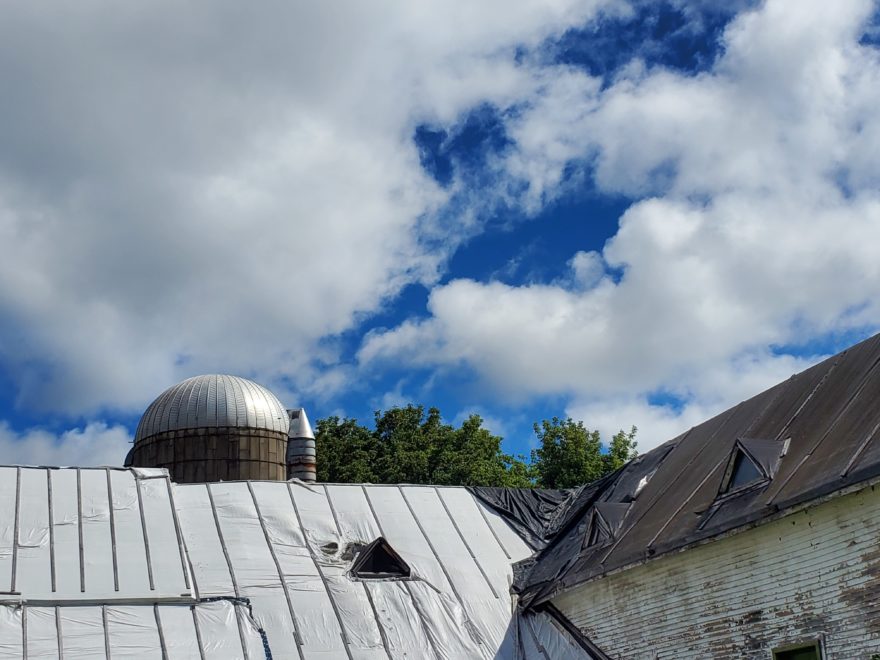It’s happening now! Yesterday was the start of international Pain Awareness Month (1), and I decided to mark it by doing what I normally do – dealing with the severe chronic pain and other pesky symptoms of my rare disease, as best I can, with help from the Pain Management Unit at my university hospital centre. From art to cycling and other forms of exercise, from a mostly anti-inflammatory diet to patient advocacy and awareness-raising, from self-compassion to medication, from sleep to stretching… and much more.
With no meetings scheduled for Thursday, I opted to take the off as a kind of pain patient ‘self-care’ day, and to write a post about it. That’s not to say that I did nothing – which is far from the truth, as you’ll see! Rather my ‘self-care’ activities were some of the tools that I use as part of my overall pain management plan, as well as to help with the other symptoms of Complex Regional Pain Syndrome (CRPS).
What do I mean by ‘pain management’, exactly? That’s an excellent question! In the simplest terms,
The goal of pain management is to help you do more and feel better. It also helps you be able to do rehab.
Medicine can be used to help with pain from CRPS… Medicine is only part of the treatment for pain from CRPS.” (2)
On that note, to start the day I took several medications at 0700; one of those is for my chronic pain. It doesn’t ‘cure’ the pain, it simply lowers it to the point at which I’m no longer vomiting several times a day – just from pain. That medication is part of my pain management plan.
After doing some simple stretching exercises, while standing and making coffee before my husband had to leave for one of his not-working-from-home days at 0730, I ate some fruit and nuts for breakfast. Trying to get some protein first thing in the morning, along with eating a mostly anti-inflammatory diet, is part of my pain management plan – as is the stretching.
Are you seeing a theme here? Almost everything I do, during the course of any given day, is intertwined with my overall pain management plan. Even my coffee! Those coffee beans that I was grinding and brewing, at 0715 in the morning, were decaffeinated. Why? Because:
“Caffeine actively causes pain by decreasing pain threshold and making the nervous system more alert to pain. This is why just stopping caffeine may bring some relief in pain.” (3) Caffeine can also disrupt sleep, which can then lead to increased inflammation throughout the body, leading to higher pain levels. There’s a reason that so many people rely on caffeine to stay awake, after all!
I was never a fan of soft drinks or energy drinks, so it wasn’t hard to cut those from my diet. I do really like coffee and other warm drinks, though, which are often packed with caffeine. After trying a LOT of decaf coffees, we finally found one so good that even my espresso-drinking sweetheart loves it; from Kicking Horse Coffee. As a bonus, it’s made right here in Canada with “100% certified Organic and Fairtrade Arabica beans”. (4)
Simply called “Decaf”, it’s a “Kick-ass coffee decaffeinated with Swiss Water Process. The best of our blends: deep, dark, tip-top taste and a fine finish” (5) The company’s website describes its aroma as “Deep chocolate with a nutty complexity” and its tasting notes as “Roasted hazelnuts, chocolaty balanced body and a long lasting finish.” (5) It really is that good!
My husband left for work soon after we had our coffee, and I start packing some basic art supplies into the saddlebags on my bicycle. Now, are you thinking to yourself that those art supplies can’t possibly be part of my pain management plan? They are! Last year I began my adventure in art, or as I call it my ‘art-venture’, with watercolour painting and sketching.
This was as a form of DIY or do-it-yourself treatment for certain symptoms of my rare disease. First off, it was a DIY movement-therapy for my right hand and arm which are particularly impacted by CRPS and its multiple forms of chronic pain.
Second, I was hoping that learning to paint – being “intensely engaged in learning and acquiring new skills and abilities” (6) – would help me harness brain plasticity (6) to prevent any worsening of my CRPS-related ‘mild cognitive impairment’ (MCI). I don’t want the MCI that stole my beloved career in bioethics and healthcare, at the end of 2018, to get any worse than it already is. This is something that my medical team is aware of, and fully supports.
If you’re interested in the progression of my art-venture, as part of my pain management plan, you can read some of the highlights here; Virtual safari, Art and bioethics, Drawing on the brain, 6 weeks, Learning ‘trick’, Drawn and quartered, and Pop-up art plus awareness. Yesterday morning I had booked an outdoor sketching class, from 0930 to 1230, with a local art teacher at a nearby farm.
This sketching class was a bit different, in that our assignment was to sketch with markers; with no erasing at all. Yikes! That’s quite a challenge, even more so for me because my right hand doesn’t work properly due to CRPS so I have trouble holding a pen or pencil – or a marker. Added to that, the weather was unseasonably cool yesterday, much too cold for me to take off the men’s extra-large Arctic mitten that I wear on that hand while cycling.
Let’s just say that these were not my best sketches ever, but I still had a lot of fun – and this activity forced me to use my hand and my brain in different ways from just about anything else. This old farm is built on a point of land extending out into a lake, and one of the highlights for me was taking a few breaks to walk down to the water where I saw a kingfisher dive for fish.

Which reminds me… I wanted to paint another kingfisher, but first I have to track down the photos I’ve taken of these local birds through the years to find one that’s in a good position to show its gorgeous colours. A project for another day!

As for the bike that I was packing, exercise is another important facet of my pain management plan. Not only did I ride over to the farm, only about 15 minutes away by bike, I also went for a longer ride afterwards; about 25 km (or 16 miles) all in all. That doesn’t sound like much, but bear in mind that I’m riding mostly with only one hand on the handlebars. And it was a very windy day, so I was struggling a bit to keep the bike straight – particularly on our little hills!
By the time I got home from my sketching class and bike ride, it was almost 1400 and well past time for lunch. I’d brought a homemade high-fibre muffin with me, which I ate just before starting the class; bran, pecans, raisins, and just a few dark chocolate chips to make our usual dessert feel like a treat. For lunch I had some high-fibre multigrain sliced bread, made with no sugar added, topped with unsweetened peanut butter. Along with the water that was left in my two cycling bottles, a peach, and a couple of plums.
Those are all components of my mostly anti-inflammatory diet, which is part of my pain management plan. I try to eat mostly plant-based foods, with as little processing and added sugars as possible, and fairly high in fibre. I wasn’t overly concerned about not having any vegetables or legumes with my lunch, because I knew we’d be having a homemade roasted broccoli and chickpea salad for dinner – served warm with a healthy dressing of fresh lemon juice, hummus, olive oil, and Garam Masala spices.
On that note, I’ll wind up this blog post as I’m getting hungry and it’s time to start making dinner! Tonight it’s my turn to cook, so I’m making one of my favourite meals; a beet and lentil salad with celery, parsley, and a dressing of Dijon mustard with just a touch of maple syrup along with some olive oil.
As for the rest of my day yesterday, by the time I’d finished lunch and cleaned up after my sweaty bike ride, it was already 1530. I unpacked my bike, answered some emails about a pain research project in which I’m a Patient Partner, did some housework, and read a few items in an art magazine (I can’t read or write for very long anymore, because of my CRPS-related mild cognitive impairment).
After that I spoke with a friend – and yes, even having a good social support network is considered part of a pain management plan! – and then started preparing dinner while listening to an interview with an artist whose paintings I really like. Then dinner with my sweetheart, chatting about our days, some time watching TV cuddled up on the sofa on a cold night, and we were in bed by 2200.
That’s the only way to get anything close to eight hours of sleep, as our alarm goes off at 0630 and my pain always wakes me up a few times during the night. And, you guessed it, getting enough sleep is very important in managing pain, because a lack of sleep can lead to increased inflammation throughout the body which causes higher levels of pain.
Tomorrow, the Friday before a long weekend, I have several meetings and calls scheduled for my various chronic pain Patient Advocacy and awareness-raising activities. It will be a rest day from exercise, but with a plan to bike each of the three days of the long weekend. And then my disease-affected body will need another rest day.
And that brings me to the final part of my pain management plan that I wanted to touch on today. At the start of this post, I mentioned cycling and other forms of exercise, a diet that’s mostly anti-inflammatory, medication, patient advocacy and awareness-raising, self-compassion, sleep, stretching… and much more.
I haven’t said anything yet about self-compassion. In some ways, that just means being kind to yourself, and accepting any real limitations that you have as being something that’s outside of your control. I’m the kind of person who likes to physically push my limits to a certain extent, whether with cycling or alpine hiking or snowshoeing or other outdoor sports. But I’ve learned since 2016 that having a disease which is both autoimmune and neuro-inflammatory means that my limits are much lower than they used to be.
Rather than try to push my body to the point at which I’m vomiting from pain again, or passing out from nerve pain again, I’ve learned that I can do more of what I love by taking a rest day every three days or so. And that if I have some junk food, my entire body will feel worse afterwards – and I’ll have more pain. That’s not to say that I never have junk food, or that I never cheat! I always say that I try to eat a “mostly” anti-inflammatory diet.
And accepting that is also part of self-compassion; knowing that we all need ‘treats’ of some kind every now and then, and letting ourselves truly enjoy them. So I hope that you do something kind for yourself today, whether that’s taking your kids to a park, going for a walk alone, calling a friend, savoring a cup of (decaf?) coffee or tea, reading a good book… whatever it is that makes YOU happy.
Stay safe, keep well, and enjoy these last few weeks of summer! As always, thanks so much for stopping by. Feel free to send comments over on Instagram or Twitter because I had to disable the Comments feature here on the blog when managing the comments got to be too much for my cognitive issues to deal with.
References
(1) International Association for the Study of Pain (IASP). Pain Awareness Month. IASP Web page. Undated (2022). Accessed 02 Sep 2022:
(2) Healthwise Staff, for Government of Alberta; Medical Reviewers: Anne C. Poinier, E. Gregory Thompson, Martin J. Gabica, and Nancy Greenwald. Complex Regional Pain Syndrome. MyHealth.Alberta.ca (webpage). Updated 08 Apr 2021. Accessed 02 Sep 2022:
https://myhealth.alberta.ca/Health/Pages/conditions.aspx?hwid=abn2964
(3) Dmitry M. Arbuck. If You’re Prone to Pain, Beware of Caffeine. Webpage. 21 Dec 2017. Accessed 02 Sep 2022:
(4) Kicking Horse Coffee Co. Ltd. Coffee Beans for Human Beans. Webpage. Undated (2022). Accessed 02 Sep 2022:
https://www.kickinghorsecoffee.com/our-coffee
(5) Kicking Horse Coffee Co. Ltd. Decaf. Webpage. Undated (2022). Accessed 02 Sep 2022:
https://www.kickinghorsecoffee.com/collections/coffee/products/decaf?variant=41656243454101
(6) Norman Doidge. The Brain that Changes Itself: Stories of Personal Triumph from the Frontiers of Brain Science. Penguin Group (Canada), Toronto. 2007. Page 87.

